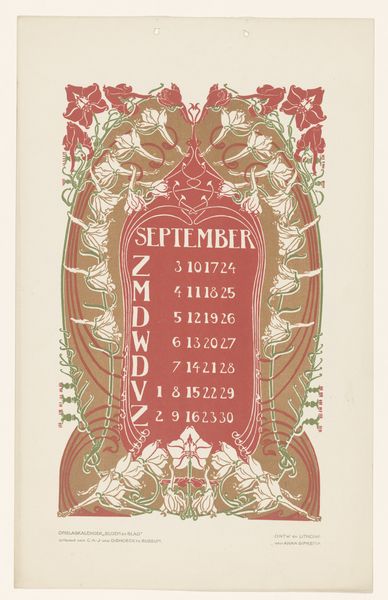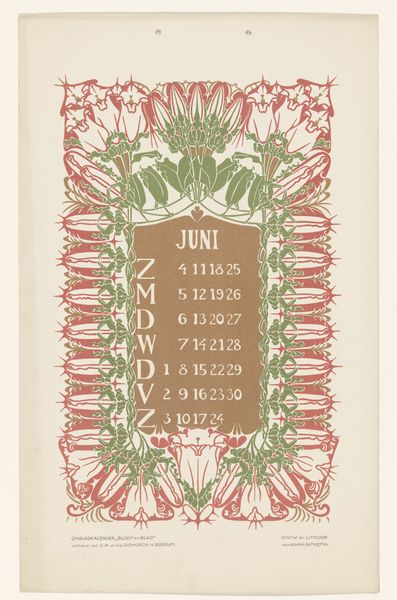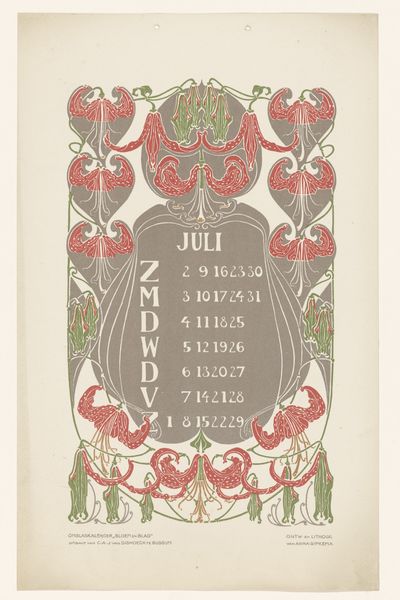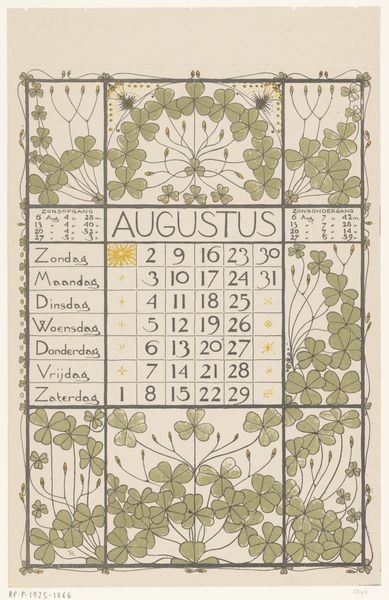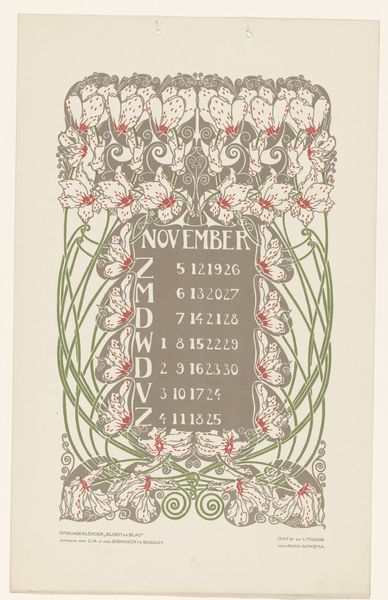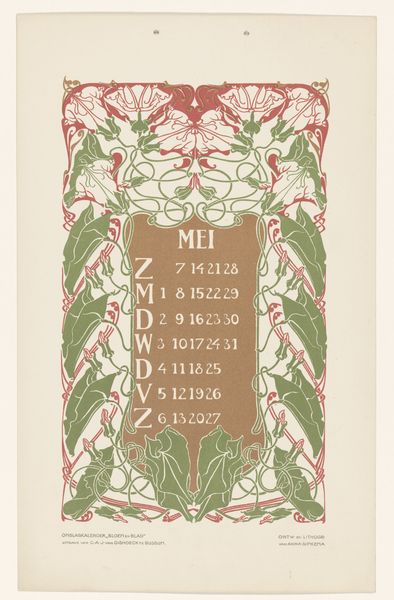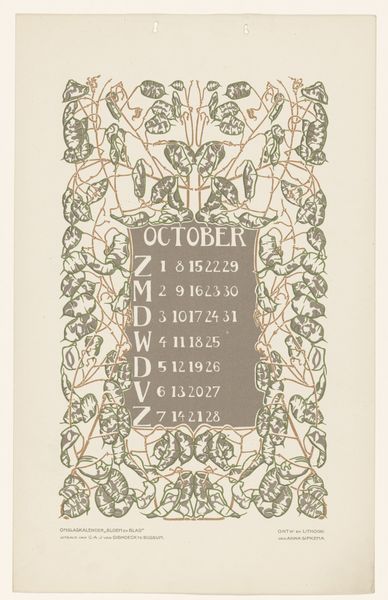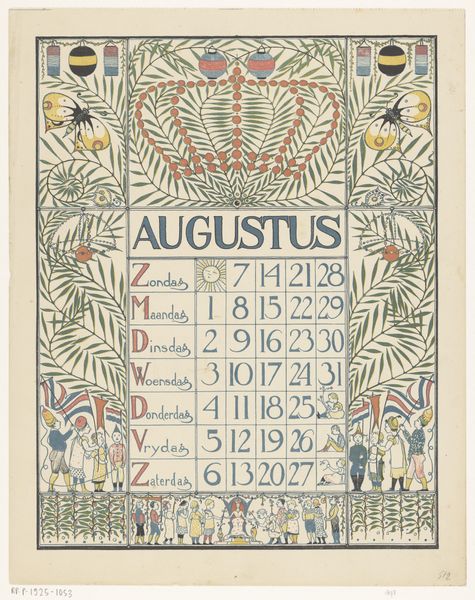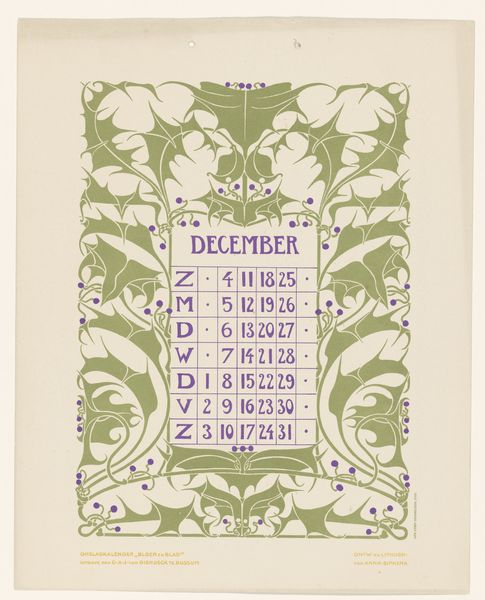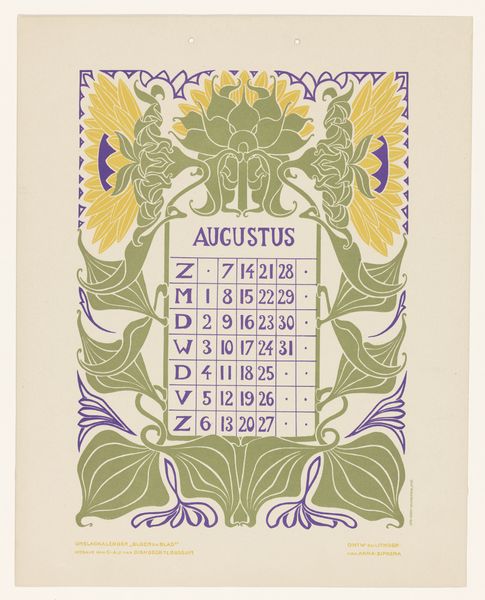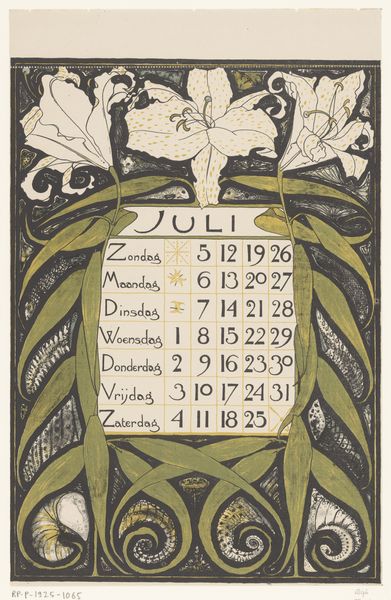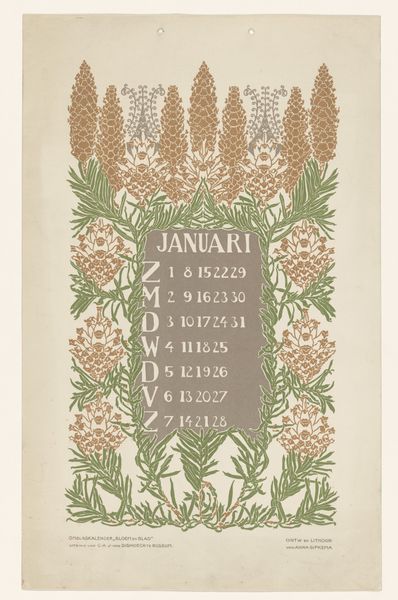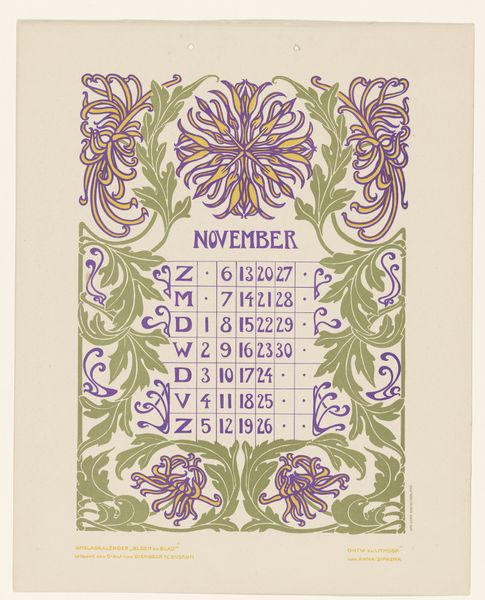
graphic-art, print, poster
#
graphic-art
#
organic
#
art-nouveau
# print
#
pattern background
#
pattern design
#
fruit
#
organic pattern
#
decorative-art
#
poster
Dimensions: height 369 mm, width 230 mm
Copyright: Rijks Museum: Open Domain
Curator: Let's take a look at "Kalenderblad augustus met aalbessen," an intriguing calendar page for the month of August created before 1905 by Anna Sipkema. Editor: My immediate reaction is…luscious! Those vibrant red berries pop against the muted green and brown. It’s also very structured. Curator: Structurally, it's quite representative of Art Nouveau aesthetics, with its emphasis on organic forms. Think about the cultural context of calendars at the turn of the century; they weren't just functional, they were decorative objects in homes and businesses, projecting specific values. What kind of values do you think are being presented? Editor: I see this calendar through a lens of empowerment, maybe even socialist undertones. By depicting a commonplace fruit like redcurrants in such a stylized, aesthetically elevated manner, it suggests a kind of accessible beauty. This calendar normalizes decoration and elevates natural objects, potentially challenging hierarchies by putting a luxurious spin on the everyday for the working class. Curator: Absolutely. The stylization aligns with the broader decorative arts movement, which sought to democratize art by making it integral to everyday life. Consider the poster’s political role and accessibility as a popular medium at the time, allowing these discussions to extend beyond gallery spaces and privileged circles. Sipkema is speaking directly to the home. Editor: Also, those intertwining vines remind me of natural networks. They echo not only growth but the importance of interconnectedness. August is a month of abundance. Its placement with an elaborate but grounded and modest artwork becomes an announcement, a statement even. Curator: Right, it visualizes a dialogue between natural abundance and the structure of the modern world represented by the calendar grid. How does Sipkema subtly hint at the negotiation of human and organic spheres? Editor: Look closely: she’s avoided any kind of absolute, perfect symmetry, allowing just a touch of irregularity that feels human and intentional. It resists mechanical perfection, suggesting acceptance and embrace. A message to viewers even now, so long after the calendar's practical purpose is complete. Curator: Exactly, it’s no longer a disposable object, but an insight to both past material culture and social perspectives of the artist. Editor: Yes, looking at it again, its lasting relevance isn't in its practicality but in its timeless artistic vision, its advocacy, even, in a particular historical moment.
Comments
No comments
Be the first to comment and join the conversation on the ultimate creative platform.
